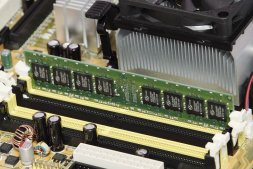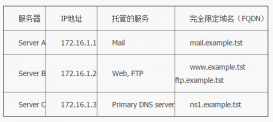一、多线程 VS 多进程
和进程相比,线程有很多优势。在Linux系统下,启动一个新的进程必须分配给它独立的地址空间,建立众多的数据表来维护代码段和数据。而运行于一个进程中的多个线程,他们之间使用相同的地址空间。正是这样,同一进程下的线程之间共享数据空间,数据可以相互使用,并且线程间切换也要更快些,可以更有效的利用CPU。
二、程序设计
[注] 头文件<pthread.h> 编译时要加载动态库 libpthread.a,使用 -lpthread
1、创建线程
2、等待线程
3、关闭线程
4、退出清除
1、创建线程
int pthread_create(pthread_t *tidp, const pthread_attr_t *attr, void *(*start_rtn)(void), void *arg)
tidp为线程id,是函数分配的值,所以要传一个 pthread_t 的地址。
attr线程属性,通常为空。
start_rtn为线程要执行的函数,返回值为空指针,参数为后面的*arg
若成功则返回0,否则返回出错编号。
例:
#include<stdio.h>
#include<pthread.h></p> <p>void *func1(void *arg){ //原函数声明
int i;
for(i=0;i<5;i++){
printf("this is func1! The num is %d\n",*(int*)arg); //将空指针转换为int型指针
sleep(1);
}
}</p> <p>void *func2(int *m){ //自定义类型声明,也可以定义非指针类型,但是在create时会有警告,因为非地址并不能改变传入的值
int i;
for(i=0;i<5;i++){
printf("this is func2! The num is %d\n",*m);
(*m)++;
sleep(1);
}
}</p> <p>int main(){
pthread_t id1,id2;
int num = 5;
int *p = #
if(pthread_create(&id1,NULL,(void *)func1,(void *)p) != 0){
printf("thread1 create error!\n");
return -1;
}
if(pthread_create(&id2,NULL,(void *)func2,&num) != 0){
printf("thread2 create error!\n");
return -1;
}
pthread_join(id1,NULL); //等待线程结束
pthread_join(id2,NULL);
printf("Running complete!\n");
return 0;</p> <p>
}
运行结果:
[fsy@localhost process]$ gcc thC.c -o thC -lpthread -g
[fsy@localhost process]$ ./thC
this is func2! The num is 5
this is func1! The num is 6
this is func2! The num is 6
this is func1! The num is 7
this is func2! The num is 7
this is func1! The num is 8
this is func2! The num is 8
this is func1! The num is 9
this is func2! The num is 9
this is func1! The num is 10
Running complete!
[fsy@localhost process]$
2、等待线程
[注]当调用pthread_create函数时,线程并没有开始执行,主进程应有等待,比如用sleep,或者用更专业的函数:pthread_join
int pthread_join(pthread_t tid, void **rval_ptr)
调用函数可以阻塞调用线程,直到指定的线程终止。
tid为等待退出线程的id,rval_ptr为函数的返回值。是指向指针的指针,可以置空。
例:
#include<stdio.h>
#include<pthread.h>
#include<stdlib.h></p> <p>void *func(int *p){
int *num=(int *)malloc(sizeof(int)); //必须动态创建,原因可以参考我动态分配内存的博客
printf("Please input the number: ");
scanf("%d",num);
return (void *)num; //类型是pthread_create的参数规定的
}</p> <p>int main(){
pthread_t pth;
void *a;
if(pthread_create(&pth,NULL,(void *)func,NULL) != 0){
printf("create thread error!\n");
return 1;
}
pthread_join(pth,&a); //指向空指针的指针
printf("get the num from the thread, it's %d\n",*(int *)a);
return 0;
}
3、终止线程
线程终止有以下三种方式:
1、线程从函数中返回
2、线程可以别其他函数终止
3、线程自己调用pthread_exit函数
void pthread_exit(void *rval_ptr)
rval_ptr为线程退出返回值的指针,即函数返回值。
4、退出清除
void pthread_cleanup_push(void (*rtn)(void*), void *arg)
rtn为清除函数,arg是清除函数的参数
void pthread_cleanup_pop(int execute)
当execute 非0时执行清除函数。为0时不执行。
从pthread_cleanup_push的调用点到pthread_cleanup_pop之间的程序段中,如果有终止进程的动作,如调用pthread_exit或异常终止(不包括return),就会执行pthread_cleanup_push()所指定的清理函数。多个嵌套匹配时,就近匹配。
例:
#include<stdio.h>
#include<pthread.h></p> <p>void *clean(char *argv){
printf("clean is called by %s\n",argv);
return NULL;
}
void *func1(void *argv){
printf("welcome enter the func1!\n");
pthread_cleanup_push((void*)clean,"the first time call!");
pthread_cleanup_push((void*)clean,"the second time call!");
if(argv){
return (void *)1; //第二次运行将此句注掉
}
pthread_cleanup_pop(0);
pthread_cleanup_pop(1);
return (void *)0;
}</p> <p>void *func2(void *argv){
sleep(1); //两个线程运行先后不确定
printf("welcome enter the func2!\n");
pthread_cleanup_push((void*)clean,"the first time call!");
pthread_cleanup_push((void*)clean,"the second time call!");
if(argv){
pthread_exit(NULL);
}
pthread_cleanup_pop(0);
pthread_cleanup_pop(0);
return (void *)0;
}</p> <p>
int main(){
pthread_t tid1,tid2;
if(pthread_create(&tid1,NULL,(void *)func1,(void *)1) != 0){
printf("thread1 create error!\n");
return 1;
}</p> <p> if(pthread_create(&tid2,NULL,(void *)func2,(void *)1) != 0){
printf("thread2 create error!\n");
return 1;
}
pthread_join(tid1,NULL);
pthread_join(tid2,NULL);
return 0;
}
运行结果:
[fsy@localhost process]$ gcc thClean.c -o thclean -lpthread
[fsy@localhost process]$ ./thclean
welcome enter the func1!
welcome enter the func2!
clean is called by the second time call! //此处先2后1
clean is called by the first time call!
[fsy@localhost process]$ vim thClean.c
[fsy@localhost process]$ gcc thClean.c -o thclean -lpthread
[fsy@localhost process]$ ./thclean
welcome enter the func1!
clean is called by the first time call! //second已经被pop
welcome enter the func2!
clean is called by the second time call!
clean is called by the first time call!
[fsy@localhost process]$
















